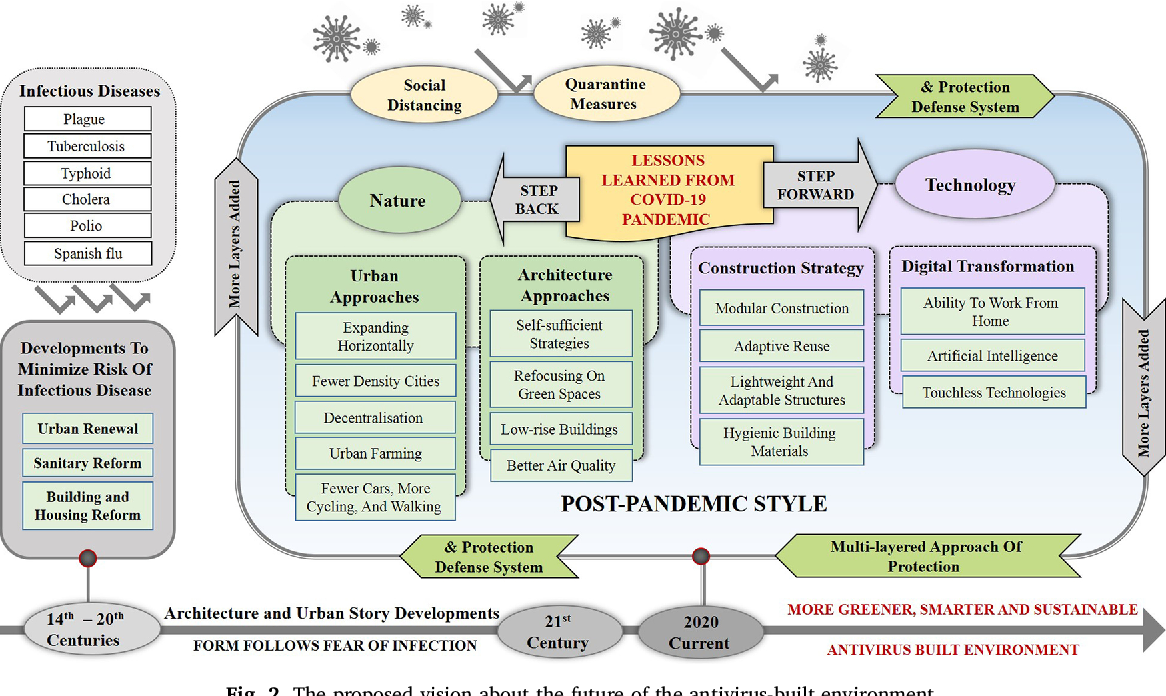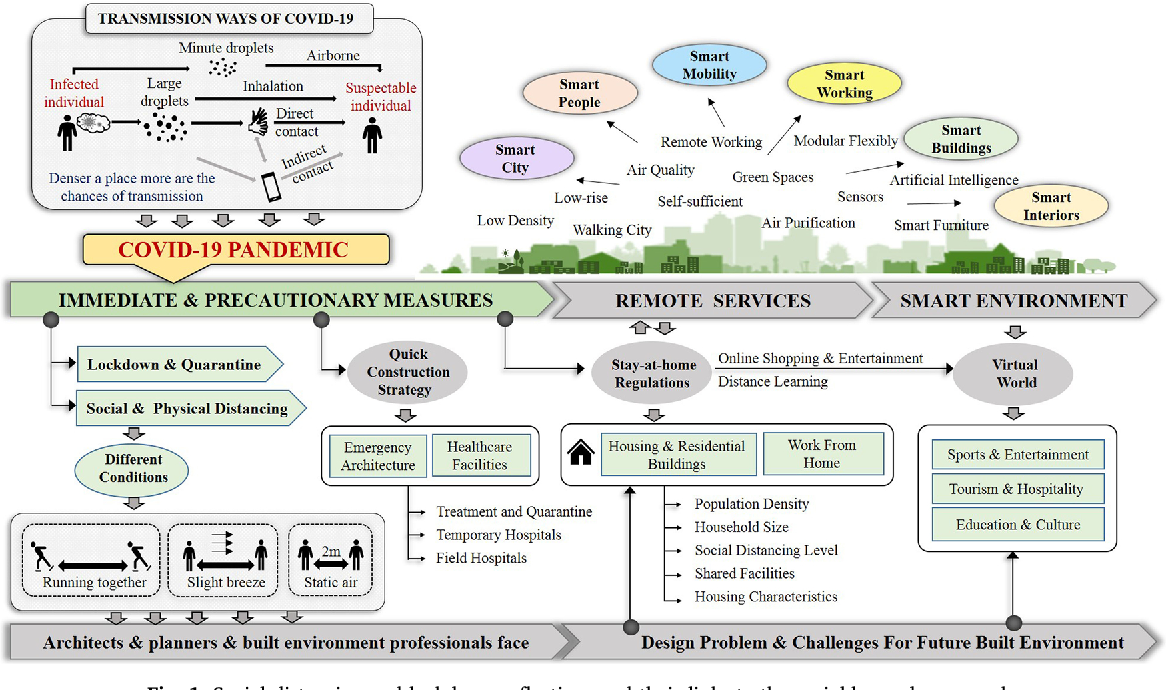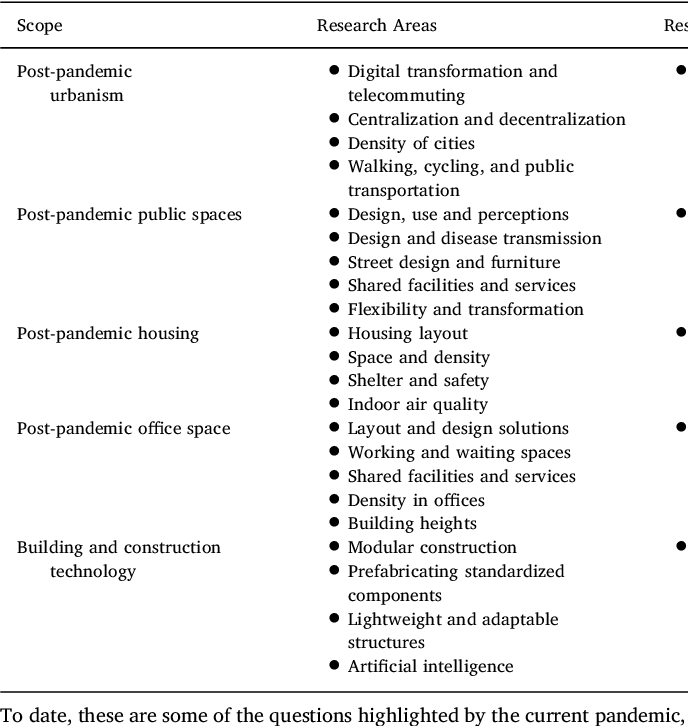Antivirus-built Environment: Lessons Learned From Covid-19 Pandemic
The lessons learned from past pandemics such as social distancing wearing masks avoiding public gatherings and adherence to guidelines along with personal hygiene are the key measures that must be taken in order to live with COVID-19. Effect of ventilation on the indoor spread of COVID-19.

Antivirus Built Environment Lessons Learned From Covid 19 Pandemic Semantic Scholar
31 PDF COVID-19 Pandemic.

. As epidemiologists prepare for the next pandemic STATs Helen Branswell has been taking stock of some lessons shes learned from COVID-19. Lessons learned from COVID-19 pandemic. Policy responses to Covid-19 outbreak in four European cities TeMA - Journal of Land Use Mobility and Environment.
Health system capacity Leadership and governance. Whether a vaccine will stimulate such antibodies in everyone is still unknown. The city challenges and external agents.
The study aims to imagine how the antivirus-built environment looks to stop the virus from spreading many architecture and urban approaches may increase the protection of our built environment. Gennaro Angiello Toward greener and pandemic-proof cities. In history there have been pandemics such as plague smallpox and malaria that have swept the world.
The current global epidemic poses a challenge at all levels in the built environment. Built environment considerations to reduce transmission. Methods tools and best practices.
It is essential to plan a system that can facilitate revival whilst ensuring healthy and hygienic living conditions. Many architecture and urban approaches may increase the protection of our built environment. Description No abstract available Theme.
Lessons learned from COVID-19 pandemic. Lessons learned from COVID-19 pandemic Virtual Regional Consultation with Informal Expert Group WHO Indonesia. However due to deficiencies in facilities and management experience many megacities are less resilient when faced with such major public health events.
The COVID-19 outbreak is not the first time that mankind has faced a global public health emergency. New Delhi India 19 October 2021. Acta Paediatrica International Journal of Paediatrics.
The COVID-19 pandemic affected how people interact with the built environment and ways of human habitation are facing significant challenges. Architects need to ensure a smooth transition to the new normal. Vol 14 No 3 2021.
The Coronavirus disease COVID-19 pandemic represents an unprecedented challenge for healthcare systems internationally and a drive for innovative working approaches has resulted in remarkable advances in the use of digital health. The study aims to imagine how the antivirus-built environment looks to stop the virus from spreading many architecture and urban approaches may increase the protection of our built environment. Megaheda Ehab M 2020 supports the prediction of highly profound spatial changes which pandemics cause in urbanism public spaces housing office spaces building and construction technology.
However the existing literature has not adequately addressed how the built environment affected the early prevalence of the pandemic. Built environment factors can therefore be used to indirectly represent human mobility over time and across space. The study aims to imagine how the antivirus-built environment looks to stop the virus from spreading.
Architectural design drives the biogeography of indoor bacterial communities. Epidemics have transformed our built environment because of. There are many questions raised by the current pandemic.
Covid-19 epidemic poses a challenge at all levels in the built environment. Precautions for the elderly and pregnant women advised by medical authorities are to be strictly adhered to. This could be a teachable moment to apply lessons from the cybersecurity world to protect our built environment during the COVID-19 pandemic.
This research aims to extend the existing literature by relating the initial stage. Lessons learned from COVID-19 pandemic. Covid-19 epidemic poses a challenge at all levels in the built environment.
View presented in Antivirus-built environment. The coronavirus is quickly spreading and causes significant damage mimicking the spread of computer viruses within a network Kindervag 2020. Lessons learned from the COVID-19 pandemic Authors.
Built environment risk factors for COVID-19 transmission include crowding poverty and racism as they manifest in housing and neighborhood features poor indoor air circulation and ambient air pollution. The United States has come a long way from understanding the virus. In the 20 years since the beginning of the 21st century mankind has experienced pandemics such as SARS Ebola and avian flu.
Whereas some people with COVID-19 make neutralizing antibodies that can clear the virus not everybody does. The built environment may alter the spread of COVID-19 by facilitating human. The outbreak of the COVID-19 pandemic in late 2019 has meant an uphill battle for city management.
Lessons learned from Covid-19 pandemic by Naglaa A. Khoo EJ Lantos JD. Prevention and Protection Measures to Be Adopted at the Workplace.
In summary this study divides the design elements of murbs in the post-pandemic era into four dimension based on the characteristics of virus transmission and peoples health needs namely zero contact system air safety system disinfection and purification system and home comfort system as shown in table 1 26 design strategies are. Report of the meeting. 2019 novel coronavirus COVID-19 pandemic.
Lessons learned from Covid-19 pandemic Before developing medications for an epidemic one solution is to go back to the physical and built environment to reduce its impact. In December 2019 a novel coronavirus strain SARS-CoV-2 emerged in the city of Wuhan China. Virtual Regional Consultation with Informal Expert Group.
The Covid-19 pandemic has once again raised a few questions and considering its reach and impact in everyday life a lot of the onus is on the Architectural community. Scenario 1The first wave of COVID-19 in spring 2020 is followed by a series of repetitive smaller waves that occur through the summer and then consistently over a 1- to 2-year period gradually diminishing sometime in 2021. 24m members in the Coronavirus community.

Antivirus Built Environment Lessons Learned From Covid 19 Pandemic Semantic Scholar

Antivirus Built Environment Lessons Learned From Covid 19 Pandemic Semantic Scholar

Antivirus Built Environment Lessons Learned From Covid 19 Pandemic Semantic Scholar
Comments
Post a Comment